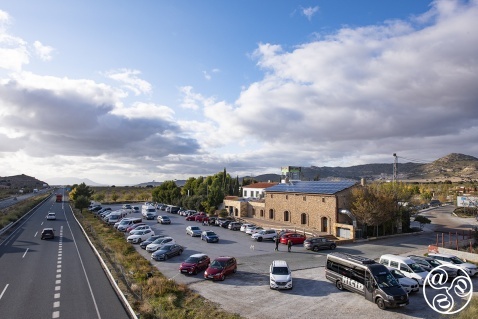
The rural village of Venta Quemada |
|
VENTA QUEMADA HISTORY
The early history of the village stems from its location being near an important Roman road – this is often incorrectly referred to as Via Augusta, but is certainly recorded in in the Antonine Itinerary II. A milestone dedicated to Emperor Octavio Augusto dated 8AD was found in the Venta Quemada river gorge and is conserved in the Cúllar parish church. The Roman road passed through Eliocroca (today’s Lorca), Ad Morun (possibly Chirivel) and Basti (Baza).
Following the reconquest in 1488, the Campo de Chirivel was the subject of dispute between the city of Baza and the Marquis de los Vélez (Vélez Blanco, Vélez Rubio and Oria). The boundary between the two was finally settled according to a geographic feature; the watershed. Rainwater falling to the west of the watershed flows into the Guadiana Menor river, a tributary of the Rio Guadalquivir and flows into the Atlantic near Sanlucar de Barrameda. Rainwater falling to the east of the watershed flows into the Segura river, which discharges into the Mediterranean near Alicante. The highpoint on the A-92 is called the El Contador pass. Sitting at 1130m above sea level, this is the current boundary between the provinces of Granada and Almería.
As elsewhere in the Kingdom of Granada, in the sixteenth century, this farming area was repopulated with soldiers and families from Aragon and Catalunya, many of whom had fought in the reconquest and had been offered land in lieu of wages owed. The important Camino Real (Royal Road) from Lorca to Granada was also re-established at this time.
The Town Hall of Baza offered land concessions to farmers, usually alongside the Camino Real at the locations of natural springs, on the condition that they would build and run ventas (roadside inns) in order to encourage travellers. This was how the village, as well as nearby Venta del Alamo, Venta del Baúl, Venta la del Peral and Venta de Vertientes arose.
Venta del Alamo was the venta from which Venta Quemada was born. It is documented to have been run between 1526 and 1532 under the ownership of Juan Martínez de Bogarra, of Baza. By 1538, it was run by a Sr Gonzalo del Río. In 1583, Alonso del Río leased the lands to two people from Vélez Rubio. Life in these ventas, half farm, half lodgings, was difficult and often even dangerous; in 1585, the justice of Baza prosecuted "some Valencians on the death of Benito Muñoz, a foreman in the Venta del Álamo".
From the venta, the village grew, with new farms run by people from Baza and other nearby towns. This is how many nearby villages originated, which still retain the name of their original owners: Santaolalla, Tarifa, Malagón, Matián, Barrionuevo, Muñoz and Don Pablo.
Venta del Alamo was located at the foot of a hill in a pine forest, probably next to the spring in the present-day village. It almost disappeared in a fire that took place at some point between 1584 and 1664; this is when the name of the village was changed from Venta del Alamo to Venta Quemada (source: Cano García, in his book ‘La Comarca de Baza’, 1974).
The most prosperous years for these farming villages were between about 1850 and 1930.
Sometime before 1961, the venta itself was sold by the Avalos family, from Baza, to a group from Cúllar.
West of Vertientes, the original Camino Real (Royal Road) from Lorca to Granada was from 500 to 1000m to the south of the current road line. It was a very important route; a 1760 survey classified it as a road fit for wheels (10.000 km in Spain and another 13.000km fit for horseshoes). It became one of the Carretera de Postas in 1761. Surprisingly, it was not planned for upgrade to tarmacadam in the 1926 ‘Circuit Nacional de Firme Especial’, so it was likely moved when the N-342 was improved as part of the 1940 Plan Peña. The upgrade to the A-92 motorway in this area was executed in 1996.
The present Venta Quemada restaurant has been open since 1987, and operated for 9 years alongside the old N-342, then by the newer A-92 motorway. It was formerly called Venta Cañada, before being bought by a new family who renamed in 2002 Venta Quemada to match the name of the village (and perhaps turn the motorway exit sign into an advertisiment for the business).
In 1815, the village itself had about 300 inhabitants, being the second most populated district of Cúllar; by 1887, the population had increased to 500. The old hermitage became a parish church in the 1868 reorganization of the diocese of Guadix-Baza with the annexing of Matián. At the end of the century, it had two brotherhoods; the Blessed Sacrament and Our Lady of Carmen.
In the 1960s and early 1970s the village underwent another wave of depopulation as workers moved further afield, principally to Alicante, Alcoy and Ibi.
